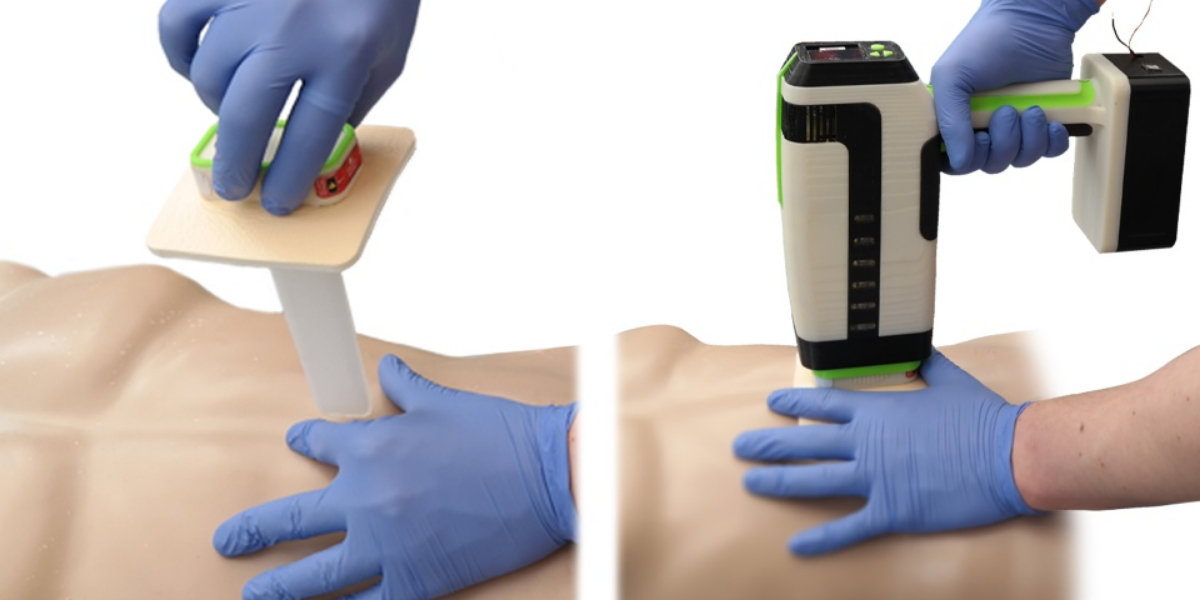AÑO
2023
CATEGORÍA
Trabajo
OBJETIVOS
Salud y bienestar
PAL. CLAVE
medical device, haemorrhage, first response
PAÍS
United Kingdom
CRÉDITOS
Joseph Bentley
LINK
https://www.lboro.ac.uk/news-events/news/2021/july/react-stab-wound-device-joe-bentley/
REACT
A life-saving device that rapidly stops bleeding from knife wounds
How does it work?
Joseph Bentley, a final year Product Design and Technology student, has designed REACT – a new method for rapidly stopping catastrophic blood loss from a knife wound that could be carried out by first responding police officers while waiting for an ambulance.
Applying internal pressure is key when dealing with stab wounds and REACT, which stands for ‘rapid emergency actuated tamponade’, is based on this principle.
REACT is comprised of two parts: a medical-grade silicone sleeve, known as a ‘tamponade’, and a handheld device called an ‘actuator’.
The prototype is currently targeted at junctional wounds (such as those in the armpit and groin areas) and the abdomen – a location paramedics and emergency first aid professionals told Joseph is hard to treat during his project research.
Why is it needed?
In the year ending March 2019, 259 people were killed in the UK using a sharp instrument, including knives and broken bottles.
A victim of a stabbing can bleed to death in just five minutes, so the priority for first responders is to control bleeding from the wound.
The police are often the first emergency personnel to arrive at a scene, so the speed at which they administer bleed prevention treatment is paramount to increasing the chances of survival.
How does it improve life?
“The simple application and automated inflation procedure of the REACT system makes it a game-changer for first responders.
“The tamponade can be in place and stopping a haemorrhage in under a minute, saving hundreds of lives a year, and as the tamponade is suitable for large cavities like the abdomen, it is also easier and faster to remove than current methods used to stop bleeding, giving the patient the best chance in reconstructive surgery,” Joseph explained.





